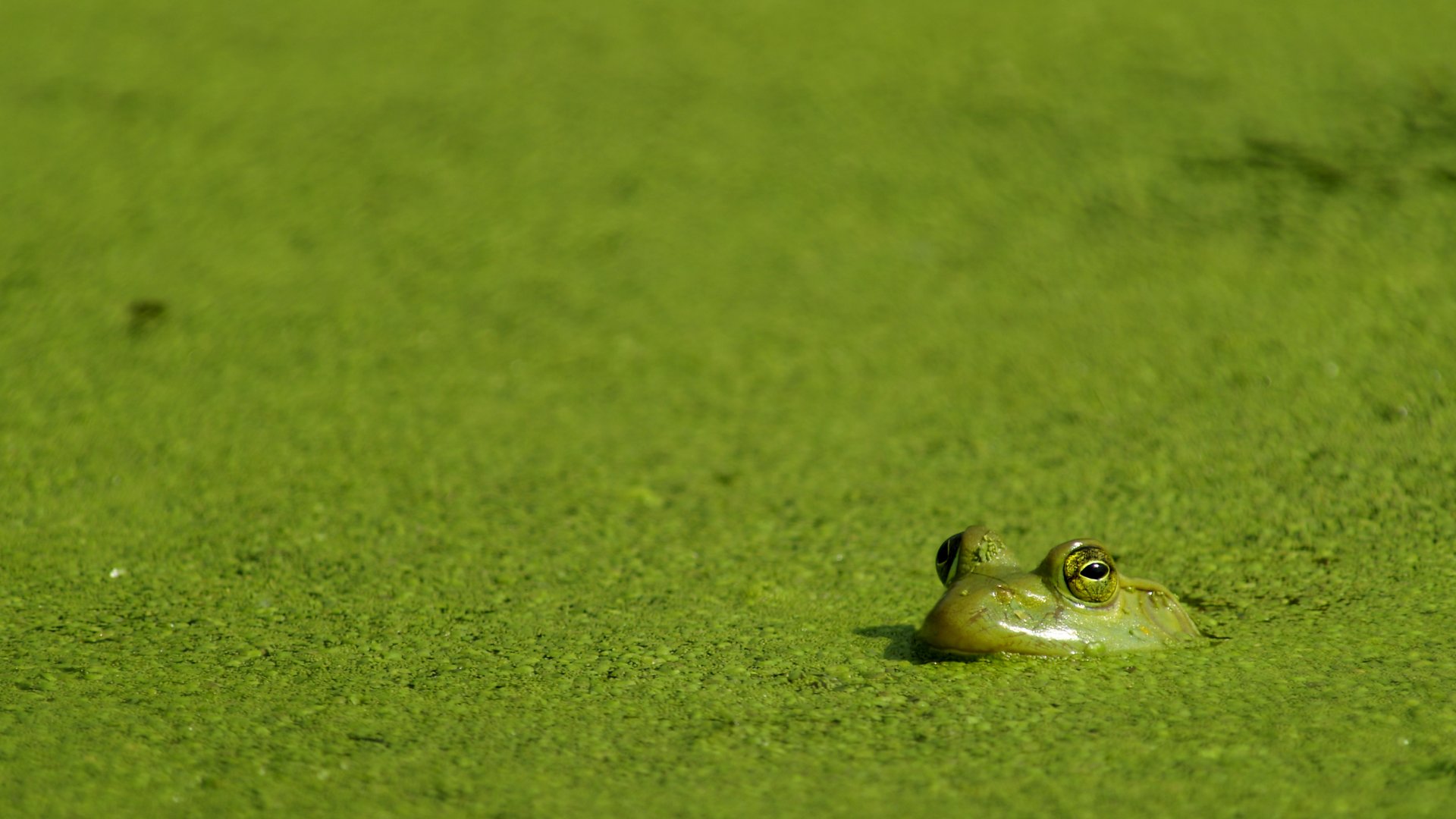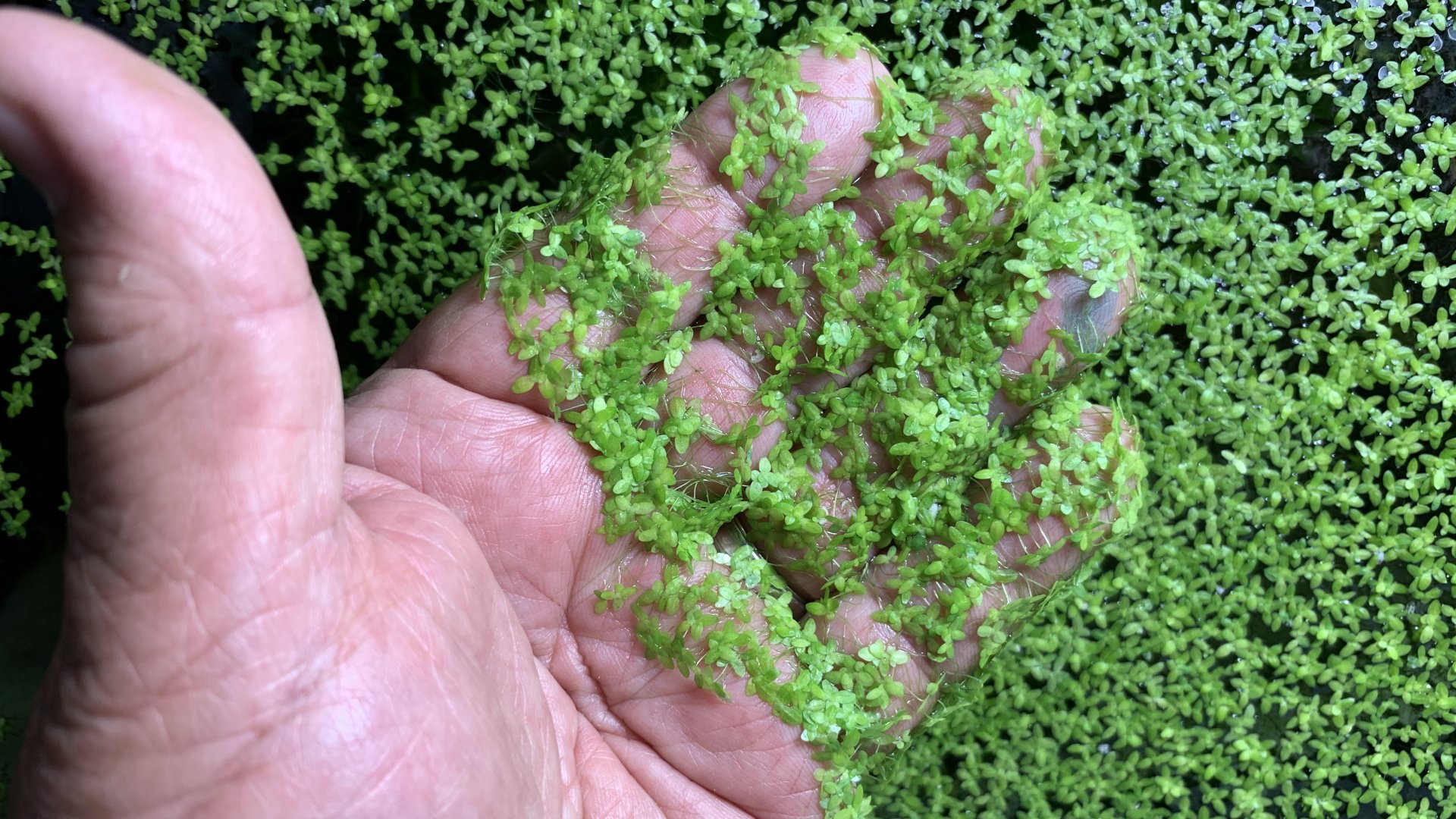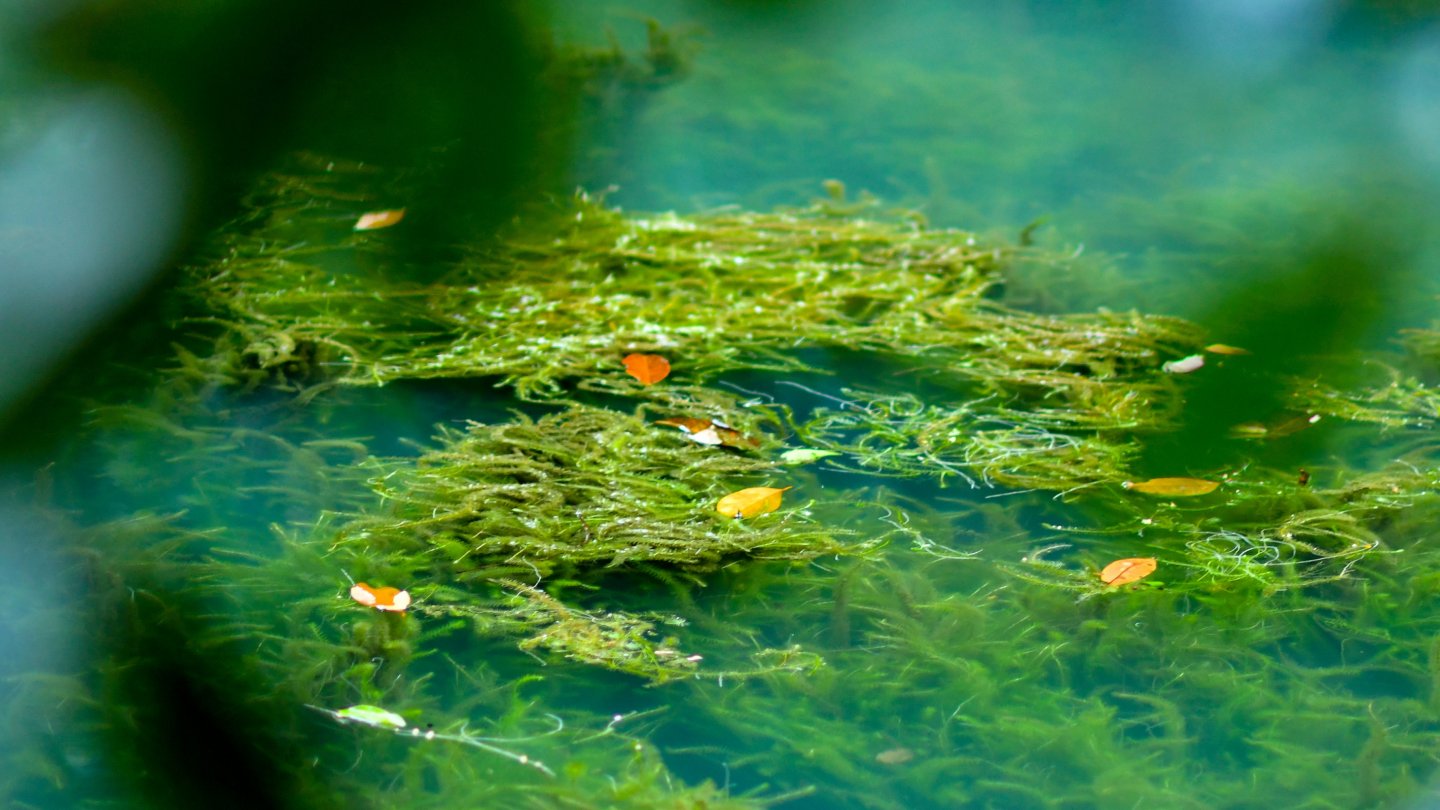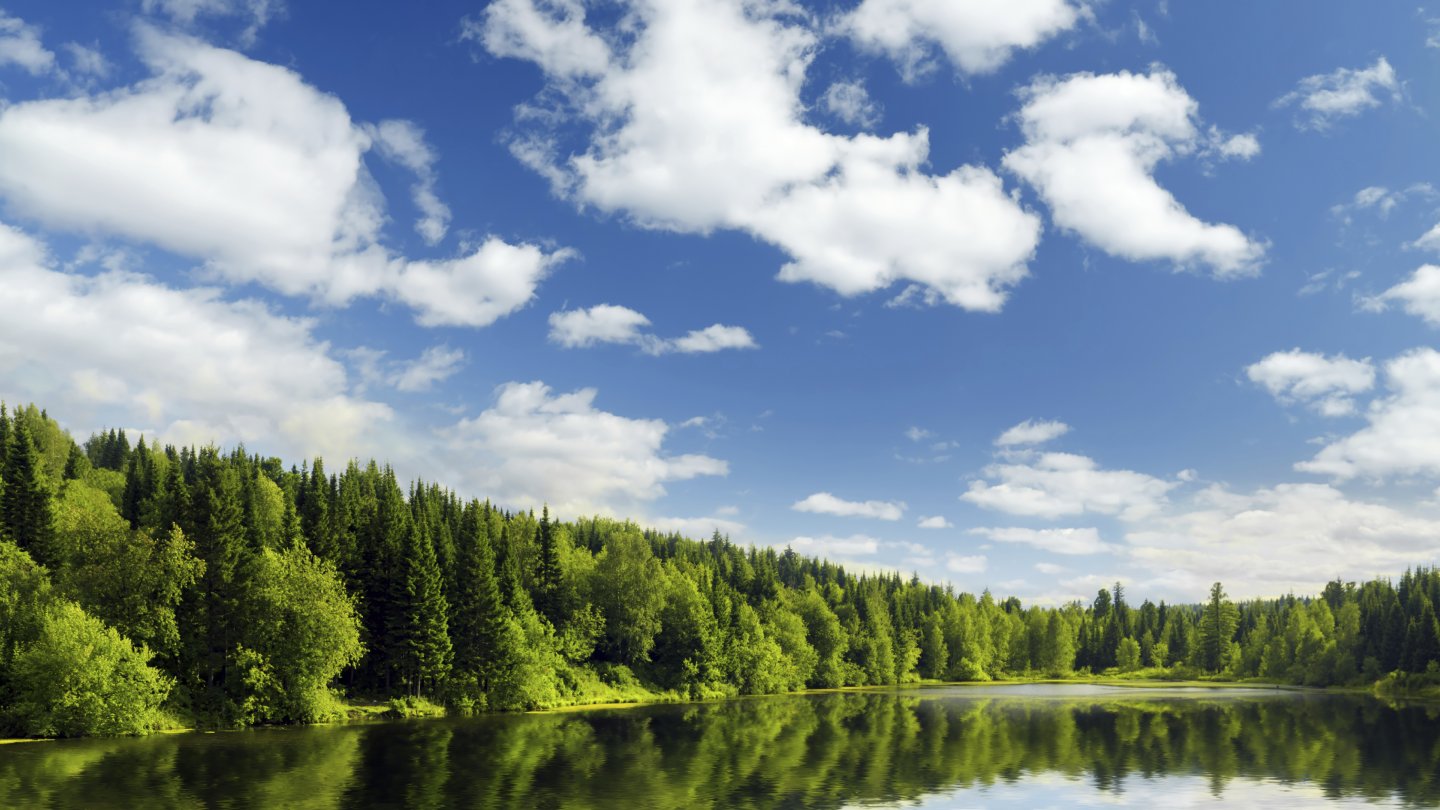
Understanding seasonal behavior of aquatic weeds and their roles in an ecosystem can help us better understand risks and realistic management expectations. This month we’re focusing on the fascinating behavior of a tiny, yet impactful, aquatic plant: duckweed (Lemna minor). Most of us are familiar with duckweed’s significant growth during late summer and early fall. Often mistaken for algae, duckweed is one of the smallest known flowering plants. Individual plants are comprised of a flat, oval leaf that is light green in color and no more than ¼” long that floats on the water surface. A thin, hair-like root dangles below into the water.
While duckweed is a native plant, acting as beneficial food source for ducks and providing essential habitats for micro-invertebrates, the capacity for exponential growth in quiet, nutrient rich waters and the risk it poses to fish often outweighs any benefits. The plant secretes a sticky substance that helps it stick to birds, frogs, turtles, and other animals that travel between different waterbodies. In ponds and lakes with few available nutrients, duckweed may be present but is unlikely to form dense surface mats.
Duckweed’s rapid proliferation is due to a combination of factors, including warm water temperatures and abundant nutrients. As lakes reach their peak in terms of nutrients and become hypereutrophic, duckweed seizes this opportunity and forms dense, floating mats on the water’s surface. These mats provide cover for small aquatic organisms, reduce sunlight penetration into the water, and contribute to nutrient cycling by absorbing nutrients from the water. These thick mats limit gas transfer between the water and atmosphere and prevent plankton photosynthesis, resulting in low dissolved oxygen levels. In ponds with dense duckweed mats and little to no aeration, the risk of a fish kill is ever present.

As temperatures drop and sunlight decreases, duckweed populations tend to dwindle. Some of our clients rejoice when they notice plants dying off, and the once-thick mats of duckweed beginning to thin out. Some of the plants, however, undergo a process known as “turion” formation. Turions are small, compact structures produced by certain aquatic plants like duckweed to survive harsh winter conditions.
During this process, some duckweed plants transform into these specialized structures, which contain stored energy and protective layers. Starch heavy turions settle to the lake’s bottom and remain dormant throughout the winter. They can withstand cold temperatures and even freezing, ensuring the survival of the duckweed population through the harshest months. When spring arrives and conditions become favorable again, the turions have consumed most of the starch they stockpiled before winter. They begin to rise to the water surface and germinate, starting the growth cycle once more.
The key to successful duckweed management is an aquatic herbicide as part of an integrated management plan (IMP). Our professional lake management programs include regular site visits from our licensed and trained biologists. We will measure the pond to ensure the correct herbicide rate is applied. The correct rate is important to ensure we eliminate the duckweed and to minimize the risk of collateral damage to beneficial plant species. Regular monitoring is also critical to ensure the herbicide concentration is in the correct range. We will also develop a better understanding of how your pond is used to continue to improve the ecosystem with aeration, nutrient remediation, and supplemental fish stocking. Our goal is to not only help our clients improve the immediate health and aesthetics of their pond, but to ensure these waterbodies will be enjoyed by future generations.



